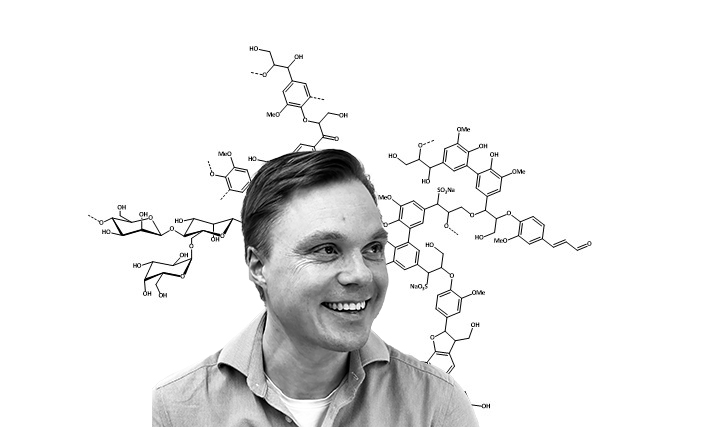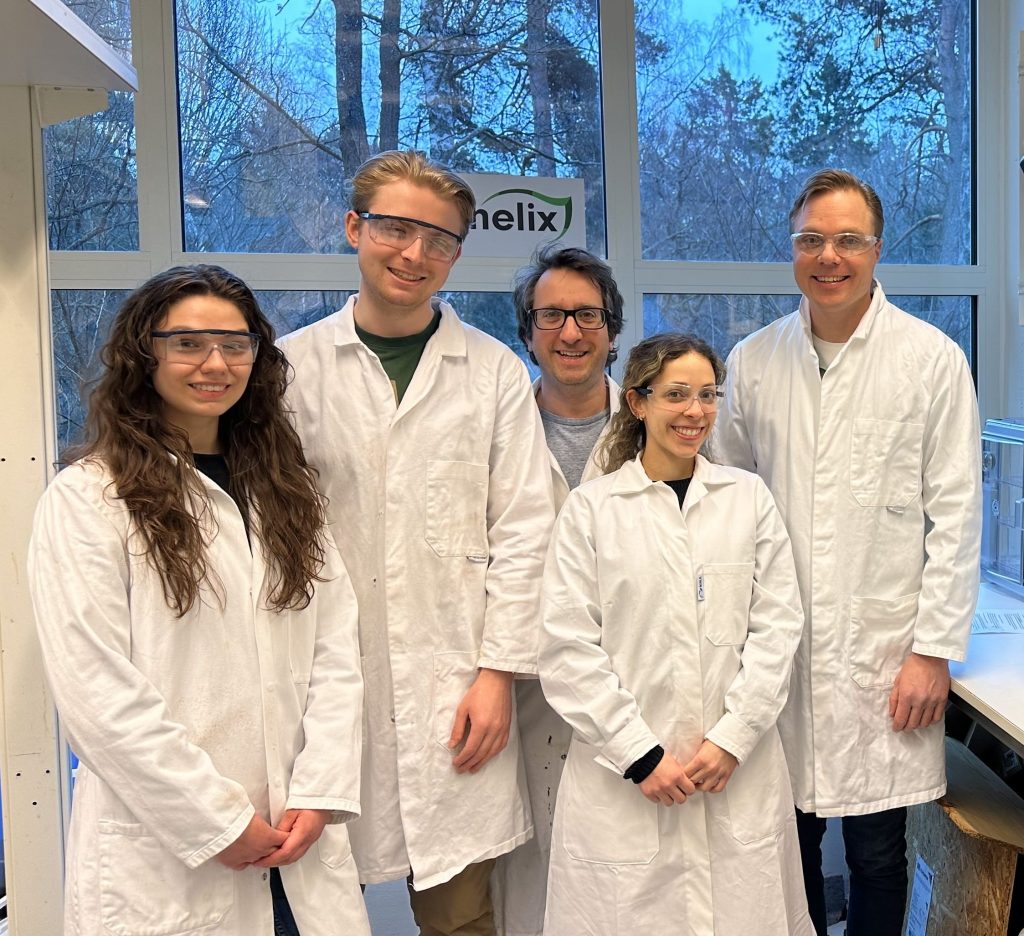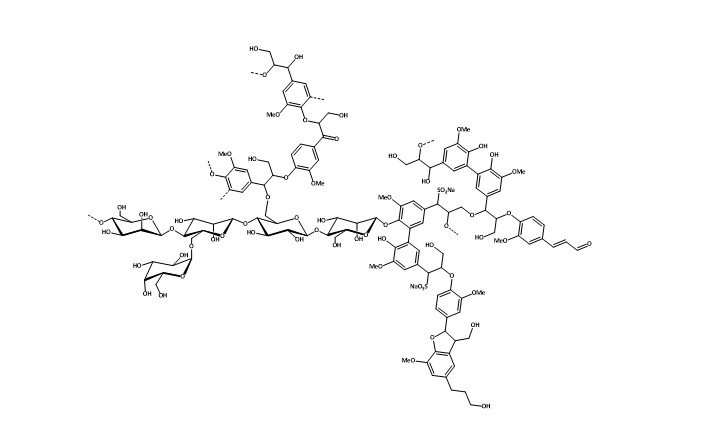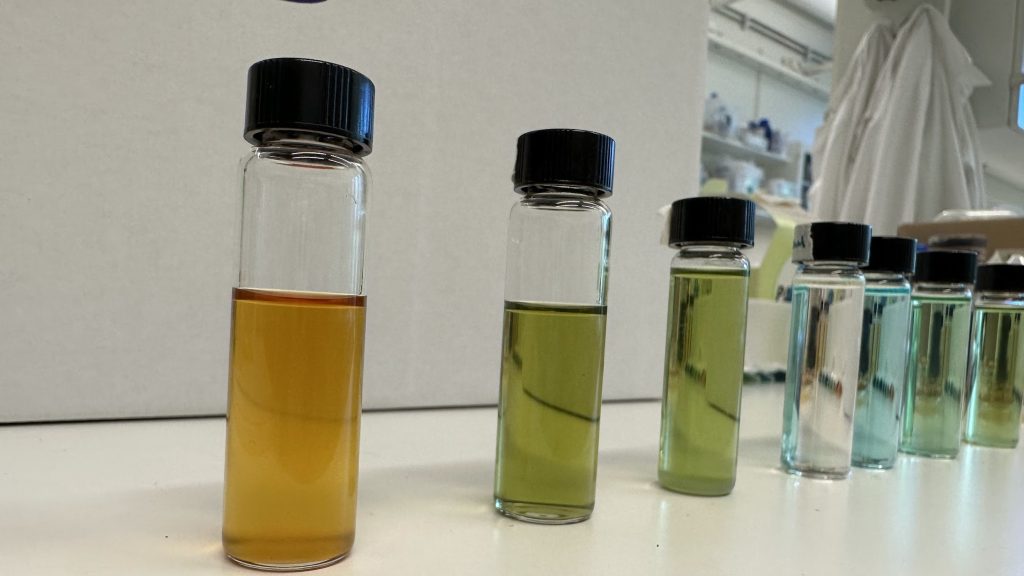“I love solving problems in a creative way. A scientist is like a detective – looking for clues, interrogating suspects, using technology to glean information, interpreting the results, using deductive reasoning, and finally solving the mystery. For scientist like myself and my team members, these solved mysteries result in new formulas, chemical compounds, and material combinations, which end up as applications in products we use in our daily life. We are innovating sustainable materials.”

Rikard Slättegard, Ecohelix R&D leader, describes his work in terms of solving mysteries. He is a scientist, but also a musician and loves to use his creativity to solve daily problems and challenges in the lab. Inspiration comes from his love of nature and from its complexity and mystery. Working with the talented people in his group and with all the others in the company is another source of inspiration.
Rikard has a strong foundation in Chemistry and a good knowledge of bio-based materials and wood-based biopolymers. At the start of his career, he studied organic chemistry and aimed to work in the pharma industry. Among his first jobs after his PhD, he worked as a chemist specialized in carbohydrates working with the modification of cellulose for paper products to enhance its properties, either chemically or enzymatically. This was followed by work with nano-cellulose, cellulose based foams, and bio composites. Today he heads the Ecohelix’ R&D team and has a clear goal in mind – to make our daily life more sustainable by producing new materials and replacing latter day fossil, organic or synthetic materials, which are harmful to nature.

The R&D Team
Ecohelix has a strong R&D team. Nicola Giummarella is a PhD., specialized in lignin analytical chemistry and Nuclear Magnetic Resonance (NMR). Lisa Höglund, a chemical engineer works with product development, applications and analytics. Mariana Serrano, just recently moved to Sweden and started to work for Ecohelix as a laboratory technician. One of the latest members, Leon Ahlström, is master’s graduate, now working with plastics extrusions to find out, what´s possible with new biomaterials and plastic composites.
Together they constitute a powerful team, all with different strengths and backgrounds. Rikard wants to make this group of talented and innovative people to bond, feel positive and feel that they have meaningful and interesting work to do every day. Cooperation, creativity, and a sense of purpose are their guiding lights – all with a human touch.
A typical day in the lab
Rikard´s team at Ecohelix kick off their morning briefing and then pursue different tasks, typically taking various raw material composites, analyzing how they behave and determining their properties.
“It´s testing with customers and finding out, what our products can do. There are also lots of product safety aspects to review. We must ensure that products and applications are safe and that we work according to regulatory specifications,” he says.
New technology turning unused side stream into valuable products
Research with different manmade materials abounds, but there are still many untapped and undiscovered materials to be found in nature. Ecohelix is committed to replacing fossil oil-based and food-based polymers in products used in daily life, providing alternatives to plastics. By solving the mysteries of chemistry and inventing new materials from nature itself, this is achievable.
Ecohelix has progressed well in this field by inventing WOODMER® biopolymer and is already ramping up from lab to industrial scale. The Ecohelix team has already identified several exciting applications, which they believe will revolutionize material technology.
Ecohelix technology uses pulp industry side stream as a material source and converts the almost untapped hemicellulose and lignin within into valuable products. Wood consists of around 25% hemicellulose and in the Nordics alone, pulp production accounts for almost 20 million metric tons per annum, so the untapped side stream is considerable when considered at a global scale.
Compared to cellulose which, consists of long polymers of glucose units, hemicellulose are smaller and more heterogenic polymers. And whereas cellulose has a well-defined clear structure, being a pure polymer with controllable properties, hemicellulose does not. Now, however, thanks to Ecohelix technology, all this changes, and what was once part of a waste product now becomes a controllable polymer too.
Better products through chemistry – innovating sustainable materials
The Ecohelix process takes the pulp mill side stream and runs it through a filtration system to purify the polymer out of the pulp mill cooking liquor. This isolates it and prepares it for the enzymatic reaction, which is the second step of the process. A Laccase enzyme catalyses a polymerization or cross-linking reaction, creating bigger biopolymers with increased molecular weight and higher charge. After the enzymatic reaction phase, there is another filtration phase to remove any remaining impurities.
The Ecohelix process gives these isolated polymers more controllable and desirable properties; such properties as being surface active, film-forming and amphiphilic, all of which can then be put to work in different products based on specification.

Naturally high performance
Reinforcing the company’s sustainable ethos, the main benefits of Ecohelix WOODMER® products are environmental friendliness and performance. In certain applications, the reduction of CO2 can be as much as 96% when compared to currently used fossil-based polymers. Woodmer biopolymers also demonstrate high performance, since in trials made e.g., for internal sizing of paper board materials, WOODMER® demonstrates as much as ten times greater performance when compared to conventional polymers, which are typically chemically modified food-based polymers. There is no compromise between performance and sustainable materials.

WOODMER® biopolymers have good film-forming properties and can be used can as barrier materials in food packaging products. WOODMER® polymers have surface active properties, and they can act as functional polymers, which makes them suitable as an emulsifier, e.g., in cosmetics and paints. Woodmer is also a dispersing agent stabilizing particle suspensions. WOODMER® can also interact and adhere with different materials (wood and paper materials) for adhesive applications.
Eureka Moments
Rikard says that the greatest moments in his work with the Ecohelix R&D team are those breakthroughs, which lead to verifiable results and working end products.
“It will be great to see Ecohelix Woodmer as a material component found in the kinds of applications we use in daily life. When that happens, we can be truly proud of our work, of those great minds, who have discovered new solutions as the sum of rigorous testing, the scientific method and logical thinking – solving mysteries like the best detectives, says Rikard adding: “In that aspiration we are well placed, since we are only at the start of our journey. There are still so many unsolved mysteries ahead and by solving them, we will find more applications sourced from nature which will make our daily lives more sustainable.”
“My greatest ambition is to see Ecohelix fly, and to raise it to new heights as part of that team. We have an amazing team spirit, and we are going to make things happen,” he concludes.
